Be sure to read through (or even review) Part 1 and Part 2 of this Have You Ever series, before you dive in here.
Why? (continued)
Another quick review. The numbered comments below match up with the Part 1 numbers. For each step of the What? I share my Why? behind it. Here, in Part 3, I share the final 12 points of the Why.
During these first few movements and the "raise-the-hand" request, I'll point out that those people with hands up are sharing something about themselves and we can assume that they all have something in common (e.g., they've all eaten a slice of pepperoni pizza, or have been part of a team building program before). The participants that did not raise a hand may or may not share something in common with each other (e.g., they didn't do what the asker did), because they could have chosen not to move even if they could have. "As we move forward together in the program we'll find out more about each other through talking and taking on tasks and challenges." After the first two or three reminders, to look around, I will leave it up to the participants to process the information on their own - we just get into the game and raise a hand if we moved.
14. Overall, I have about six participants share a, Have you ever... question to get some good movement and interaction and to notice some commonalities. I don't go on too long at this level because I want to change it up a bit and get back to talking about, and experiencing, choice.
15. Before changing the dynamics of the activity I take some time with the group to explore the choices that were made during the last several rounds. It's easy, at this point, to take in a few responses and move on. I like to stick with this "choice thinking" for a while. The first five or six responses are usually pretty easy to come up with, then when it goes quiet (that, quiet discomfort) we often just move right on to the next part of our process. I like the discomfort. In this discomfort we are also making choices. "Should I say something?" "This is boring, let's move on?" "Oh, maybe there is more we are not seeing. I wonder. Let me think. What else is there?" I believe there is a skill development process that can be experienced and practice when in quiet discomfort. What skills can we practice? Patience? Cognitive engagement? Managing frustration? Participation? Respect? I believe providing more time to think about more possibilities to one question there is more time to practice community building behaviors. And, providing more time also gets us to deeper thinking and more answers - answers that are often more interesting than our first reactions.
During this discussion I also ask my groups what choices they "didn't" make. It's wording that stimulates a different way of thinking. Yes, we can frame choice answers in the positive (so to speak). For example, "I chose to be quiet during the game so I could concentrate more on finding a spot." This could also be worded in this way, "I chose not to talk during the game so I could..." I found this option ("I chose not to...") helps me when I'm working with people (especially young people) working on specific behavior change. Here is my favorite (true) example, "I chose not to make fun of someone when I felt the urge during the game because I know I want to work on this." Another, very common one I've heard several times is, "I chose not to run to a spot because I know I might hurt someone if I ran into them." Again, it seems some brains are wired to see what was "not" done as opposed to what "was" done. Now, do we direct skill development towards "I chose to..." and away from "I chose not to..."? I don't know if it matters. We'll have to propose this question to others more qualified to answer (e.g., mental health professionals). If you have an idea, please share!!
16. After I point out the fact that everyone had a spot around the circle during the first round of questions, I make the physical move to the center with my spot to show everyone things are about to change. Now, I could simply stay on my spot as part of the circle and explain what’s going to happen. It is arguable that staying as part of the circle I will be able to see everyone while I’m talking – my back will not be turned to anyone in the circle. However, I believe this physical change provides some visual preparation for the change. (And, I use a nice loud voice, turn often, and repeat the directions at least a couple times in order to get the change across.)
17. By simply moving into the center of the circle there are usually a handful of participants that can figure out what’s ahead. And, by changing the game configuration participants are starting to prepare themselves for something to change. If I sense some strong reactions to this physical change I might take a brief moment (before I provide details about the change) to check in with my group to find out what emotions are surfacing. Some people have physiological reactions to change that are challenging to manage. “I was comfortable, now I have to do something new. I’d rather stay where I’m comfortable.” This is an example of one type of comment made several times in my experience. Even playing a (seemingly) simply game, change aversion can come up for people. So, I keep myself mindful of reactions during my move to the middle.
When I sense I can provide the group with new information I share the change in the game. During the directs to the change, I do say that the person in the center is, “…obligated to ask a, Have you ever… question.” This can be interpreted as not having a choice in the matter. But do they? There is often an assumption of a consequence without checking. I love it when participants ask about the “obligation” when left in the center. “Well, what choices do you have? Do you have to move?” On more than one occasion, I’ve been involved in a conversation about obligation. Even though a participant does not want to be caught in the middle (they don’t want to be “on the spot”), they still feel obligated to move if the question is true for them. The ensuing behaviors related to avoiding getting caught in the middle tend to be on the assertive side and have caused uncomfortable emotions, reactions and even consequences. Again, so much can happen in a “simple” game if one pays attention. And, it doesn’t have to take a lot of time to share insights, feelings and feedback.
18. Before playing the new version of, Have you ever… we take some time to look at the changes ahead and possible choices we have moving forward. Again, what will be choosing to do and what might we choose NOT to do? I also slip in some possible norming behaviors, “How do we want to play during this part?” There are usually some warnings related to increased movement (speed) that might show up and suggestions as to what behaviors might be considered during play. I don’t push this question too much, I just like to introduce the idea of considering how we want to BE together. I will continue with norming discussions later if it within the scope of the program goals.
19. Now we get into the new version of the game. After each question, we raise hands and recognize similarities. I also choose to stay on my spot (for the most part) and observe the behaviors of my group in play. (What’s that quote? You can learn more about people in an hour of play than a day of conversation – something like that.)
First and foremost, I’m looking for safety concerns and I address these right away. I will push safety-related norms if needed and hold my group to these norms. I’m also looking and listening for (and at) the behaviors I see and hear. I want to start getting a picture of the individuals in the group and the group as a whole. How are they playing together? Are players exhibiting more individual (selfish) behaviors or group (thinking of others) behaviors? Are players asking for help? Are players talkative or quiet? These observation prompts and behavior data will help me adjust the activities ahead (if needed), and help me frame questions during processing sessions that are related to what’s happening (as opposed to being related to program objectives that might not be relevant to the group at the time).
20. I wove the issue about safety concerns above – if I see something, I say something. There have been times when I explore the choices made around unsafe behavior. Excitement and high energy individuals often “blame” the context of the game for their behaviors – “Well, you didn’t say we couldn’t run.” “I didn’t want to lose (i.e., be in the middle), so I made every effort to get to a spot.” Lots of great opportunities to discuss group interaction, behaviors and norms. And, why certain behaviors are more acceptable within a group than others.
21. After about six to eight questions from participants, I stop the activity in order to readdress our choices one more time. During this third round of choice thinking, I often hear more insightful responses. The group has practice and experience with the question. They are ready to add more to their answers – expand the thinking.
At this point, I will also share some of the observations I made related to choices being made if the participants do not bring up what I’m thinking about. I do like to check in with participants (in general) about what I saw. Like, “Why do you think some players chose to move quickly to an open spot? Did anyone notice this?” “Why do you think some players offered help during the game and others did not? What helpful behaviors did you notice during the game?” “Why might it be difficult for someone to come up with a, Have you ever… question when they ended up in the middle? What was this like for you if this happened?” My general approach is meant to build some empathy for some of the behaviors we might see within a group and to open the door to developing some norms around how we want to be together. It’s an opportunity to recognize what’s going on, even if everyone did not see what was going on. Playing and observing are difficult to do at the same time – a good reason to have a facilitator in the group.
22. At this point I want to frontload some of the possible experiences ahead. If (and more often than not) there are participants that have been in team building programs before, I ask them what choices they’ve made in the past during similar programs – I like to get them talking first. Then, I can add to the conversation with some of my experiences. Again, in educational terms, I’m providing an anticipatory set – things people will (or might be) faced with in the near future.
Maybe I’m planting seeds? Maybe I’m “setting” the group (and participants) up for a predetermined outcome? As I see it, with the time I have, it’s a way for me to get closer to desired outcomes. If you have more time (e.g., working with students over the school year), you can do less frontloading and provide more exploration and discovery. Letting my group know there will be lots of choices ahead is the intent of this final look at choice.
23. My caveat. Again, my personal philosophy about choice (developed during my work with “at-risk” youth populations). I am partially responsible (my participants share in this responsibility) for my group's wellbeing. I need to know where everyone is at all times. Yes, at ALL TIMES. The choice to “disappear” is not an option for my participants. Now, if I relinquish my responsibility to another responsible party (e.g., a teacher or chaperone with the group), then the participant (or participants) is no longer my responsibility. So, I share my expectation about this choice right away. As you see it’s worded, someone can step away from the group when needed (and it can be needed), but it’s important for me to have everyone in my sights. And, I word it as “helping me” with this. Most of us are very willing to help someone when asked respectfully and with reason. There might be some questions about this and even push back on not having the choice to walk away, out of sight. But, I respectfully make it clear that, as in life, there are limits to our choices sometimes.
24. Now we need the rally cry. I want to ignite a little energy to move forward. I’m always excited to get into the program after a good foundation and understanding (hopefully) of the choices ahead. As we move forward together, choice thinking conversations continue since we’ve laid the groundwork for thinking about choice on purpose.
All the best,
Chris Cavert, Ed.D.

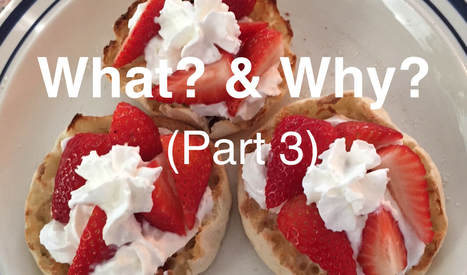
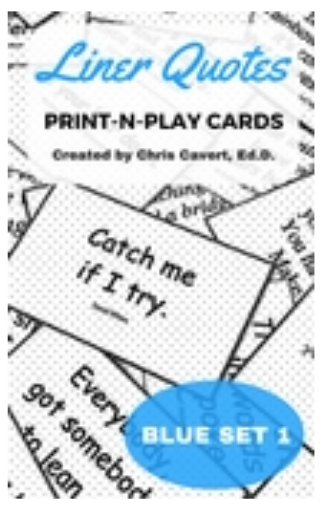
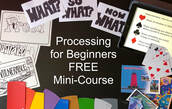

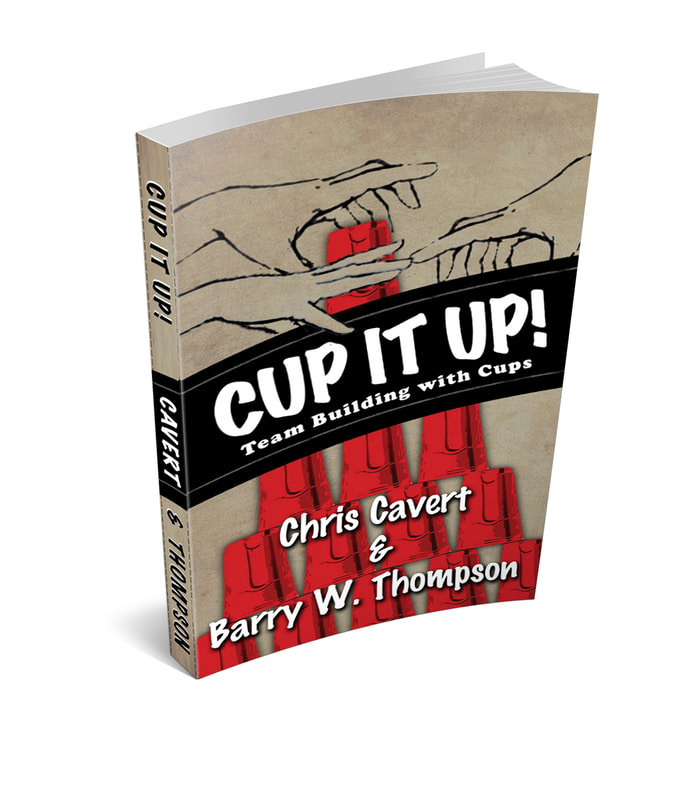
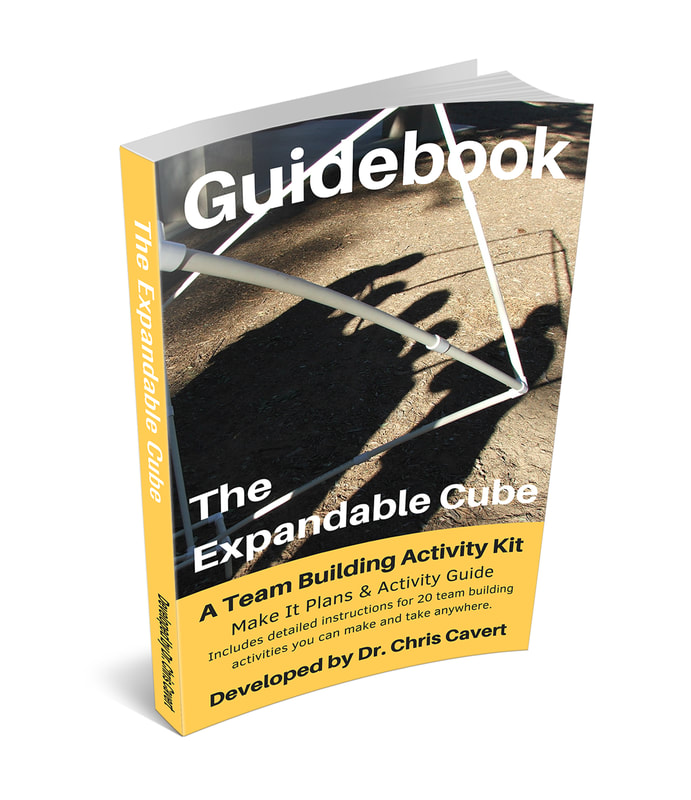
 RSS Feed
RSS Feed